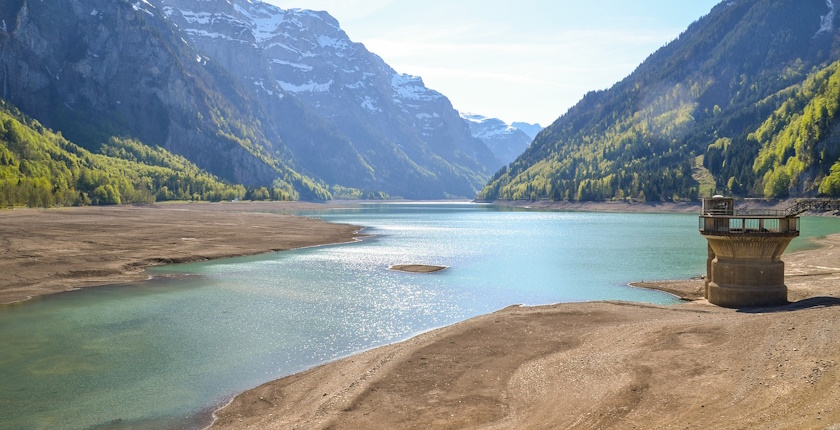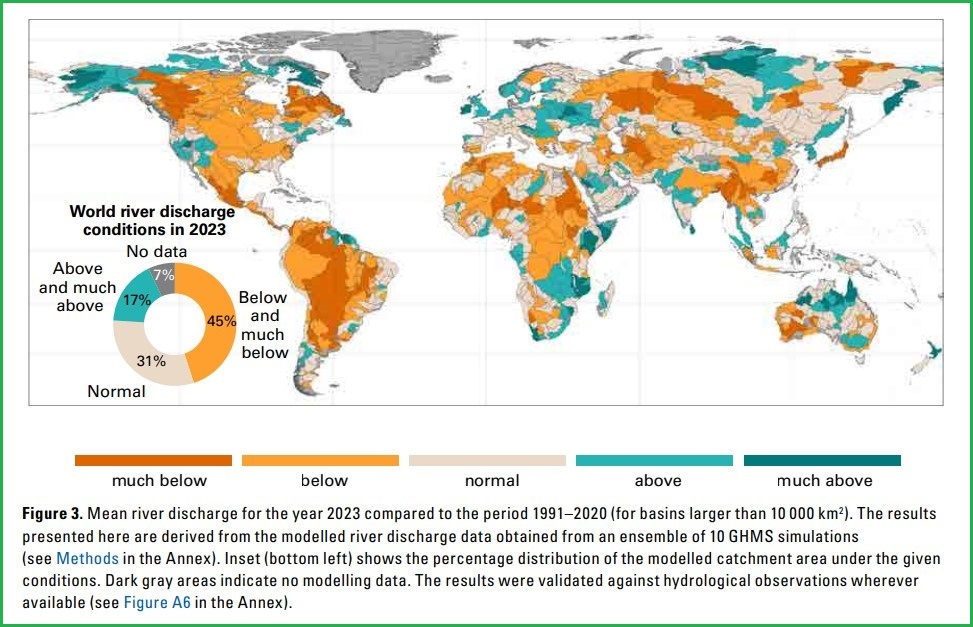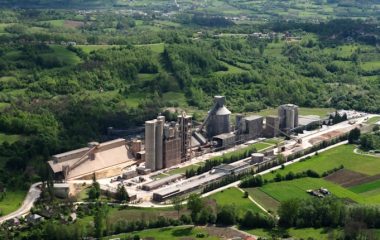
Photo: Sarah Lötscher from Pixabay
In 2023, riverbeds across the world were the driest in over three decades, according to the latest report by the World Meteorological Organization. The paper highlighted critical changes in water availability in an era of growing demand.
The last five consecutive years have recorded widespread below-normal conditions for river flows, with reservoir inflows following a similar pattern, the World Meteorological Organization (WMO) warned. It resulted in a drop in available water for communities, agriculture, and ecosystems, and further stressed global water supplies.
Glaciers suffered the largest mass loss in the last five decades and, for the second consecutive year, in all regions with glaciers.

With 2023 being the hottest year on record, elevated temperatures and widespread dry conditions contributed to prolonged droughts. But there were also a significant number of floods around the world.
The extreme hydrological events were influenced by naturally occurring climate conditions – the transition from La Niña to El Niño in mid-2023 – as well as human-induced climate change, according to WMO experts.
“Water is the canary in the coalmine of climate change. We receive distress signals in the form of increasingly extreme rainfall, floods and droughts, which wreak a heavy toll on lives, ecosystems and economies. Melting ice and glaciers threaten long-term water security for many millions of people. And yet we are not taking the necessary urgent action,” WMO Secretary-General Andrea Celeste Saulo noted.
Saulo: The hydrological cycle has become more erratic and unpredictable
As a result of rising temperatures, the hydrological cycle has accelerated, in her words. It has also become more erratic and unpredictable, and the world is facing growing problems of either too much or too little water.
A warmer atmosphere holds more moisture, which is conducive to heavy rainfall. More rapid evaporation and drying of soils worsen drought conditions, according to the WMO Secretary-General.
“And yet, far too little is known about the true state of the world’s freshwater resources. We cannot manage what we do not measure,” Saulo stressed.
Authors of the third edition of the State of Global Water Resources said that it is the most comprehensive one to date.
It is based on input from dozens of national meteorological and hydrological services and other organizations and experts, WMO said.





















Be the first one to comment on this article.